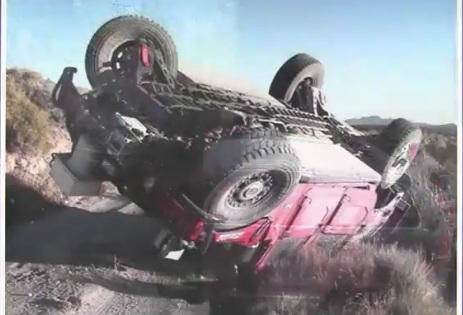
Science Wednesday is a category I've wanted to create for a while. It will feature a weekly summary of an interesting academic article or other piece of science that I find - the primary reason being to force me into reading original sources and hopefully give you guys something interesting.
Even though the world is a-buzz with news of a possible higgs boson discovery, I decided to start off Science Wednesday with excerpts from this week's lecture on robotics at ai-class.com. Sebastian Thrun talked about Stanford's autonomous vehicles and how the Stanford Racing Team managed to snag victory at the DARPA challenge a couple years ago.
And when I say "snag victory", I mean Stanley was the only car to even finish the race. The way they did this is really impressive and by now the technology has become so advanced the Google cars can drive in normal traffic on regular San Francisco roads!
That was the inspirational OMG THIS IS AWESOME part of the lecture.
Two algorithms are essential to achieving this: localization and path planning.
Localization
For localization they use something called monte carlo localization. It uses a particle filter as the beating heart of the approach - it sounds all fancy, but it's really quite a simple approach.
Basically the idea is that you take measurements from your sensors and randomly scatter some points on your likely location. Then you compare measurements with whatever you know is correct for each point and assign appropriate weights - basically saying "Ok, if I am on a road marking there is a 90% chance the sensor will say 'White'".
After some normalization you take points with the most weight and move them forward a bit, adding some scatter and eventually you become very certain of your location on the road because the algorithm converges into a single point.
Path planning
For path planning two approaches are used. Dynamic programming is used to plan the path and a modified A* algorithm is used to plan the actual movement within the map.

Dynamic programming enables the robot to find the shortest path from current state to goal. The approach is actually pretty simple - just backtracking from the goal to the start and subtracting the cost of movement, if you have stochastic actions (e.g. sometimes going forward makes you go left) you have to perform the whole calculation a few times until the algorithm converges.
To plan the actual movement a modified A* algorithm is used. The biggest difference is that the algorithm works in a continous world instead of discrete and the cost estimation function considers limitations in the robot's movement.
And here are two shiny videos that show off these two concepts.
So there you have it, the basics for making a car that drives itself :)
Continue reading about Science Wednesday: Self-driving cars
Semantically similar articles hand-picked by GPT-4
- Udacity - learn how to give an autonomous car its brain
- Everyone should work out! (here's why)
- ml-class.org vs. real world ML class
- Stop making cars into living rooms and speeding won't be a problem!
- Why a coding AI like Github Copilot won't take your job
Learned something new?
Read more Software Engineering Lessons from Production
I write articles with real insight into the career and skills of a modern software engineer. "Raw and honest from the heart!" as one reader described them. Fueled by lessons learned over 20 years of building production code for side-projects, small businesses, and hyper growth startups. Both successful and not.
Subscribe below 👇
Software Engineering Lessons from Production
Join Swizec's Newsletter and get insightful emails 💌 on mindsets, tactics, and technical skills for your career. Real lessons from building production software. No bullshit.
"Man, love your simple writing! Yours is the only newsletter I open and only blog that I give a fuck to read & scroll till the end. And wow always take away lessons with me. Inspiring! And very relatable. 👌"
Have a burning question that you think I can answer? Hit me up on twitter and I'll do my best.
Who am I and who do I help? I'm Swizec Teller and I turn coders into engineers with "Raw and honest from the heart!" writing. No bullshit. Real insights into the career and skills of a modern software engineer.
Want to become a true senior engineer? Take ownership, have autonomy, and be a force multiplier on your team. The Senior Engineer Mindset ebook can help 👉 swizec.com/senior-mindset. These are the shifts in mindset that unlocked my career.
Curious about Serverless and the modern backend? Check out Serverless Handbook, for frontend engineers 👉 ServerlessHandbook.dev
Want to Stop copy pasting D3 examples and create data visualizations of your own? Learn how to build scalable dataviz React components your whole team can understand with React for Data Visualization
Want to get my best emails on JavaScript, React, Serverless, Fullstack Web, or Indie Hacking? Check out swizec.com/collections
Did someone amazing share this letter with you? Wonderful! You can sign up for my weekly letters for software engineers on their path to greatness, here: swizec.com/blog
Want to brush up on your modern JavaScript syntax? Check out my interactive cheatsheet: es6cheatsheet.com
By the way, just in case no one has told you it yet today: I love and appreciate you for who you are ❤️
